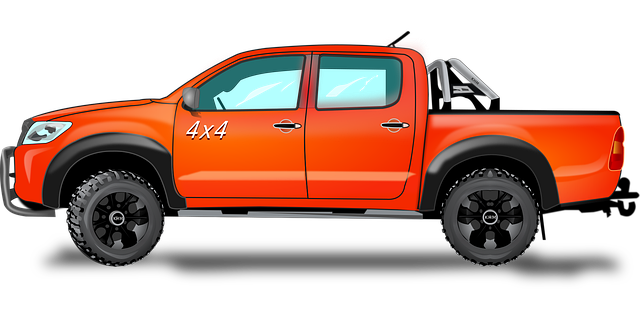Hitch balls are crucial for maintaining safe cargo transportation in Brownsville fleets, acting as essential connectors between towing vehicles and trailers. By choosing the right hitch ball types (Class III or IV), fleet managers can optimize operations, enhance safety, and reduce truck brake pad replacements, saving costs. This simple yet powerful tool has transformed maintenance in Brownsville's fleet, minimizing downtime, boosting safety, and demonstrating that small changes can lead to significant improvements in large-scale trucking operations. Implementing hitch ball systems offers advantages like enhanced loading flexibility, cost savings, and improved productivity, with best practices including compatibility checks, high-quality hardware, regular inspections (especially truck brake pads), and proper training for drivers and dispatchers.
“Hitch balls, a versatile component in truck maintenance, play a pivotal role in efficient vehicle management. This article explores their significance, offering an in-depth look at various types and their functions. We present a compelling case study of the Brownsville Fleet, who harnessed hitch balls for successful and cost-effective truck brake pad replacement. Furthermore, it delves into the benefits and best practices of implementing hitch ball systems, highlighting their potential to revolutionize commercial fleet operations, especially in tasks like brake maintenance.”
- Understanding Hitch Balls: Their Role and Types in Truck Maintenance
- Brownsville Fleet: A Case Study on Efficient Truck Brake Pad Replacement with Hitch Balls
- Benefits and Best Practices for Implementing Hitch Ball Systems in Commercial Fleets
Understanding Hitch Balls: Their Role and Types in Truck Maintenance

Hitch balls are integral components in truck maintenance, serving as a crucial connection between a trailer and the towing vehicle. They facilitate secure attachment, enabling seamless transport of goods over long distances. Understanding hitch balls involves grasping their role as versatile connectors that adapt to various trailer types, ensuring stability during travel.
In the context of Brownsville fleet operations, efficient truck brake pad replacement strategies are intertwined with the proper utilization of hitch balls. Different hitch ball types, such as class III and IV, cater to specific trailer needs, enhancing safety and performance. By aligning hitch balls with suitable trailers, fleet managers in Brownsville can optimize their operations, ensuring both cost-effectiveness and the integrity of their vehicles, thereby reducing the need for frequent brake pad replacements due to misaligned or incompatible attachments.
Brownsville Fleet: A Case Study on Efficient Truck Brake Pad Replacement with Hitch Balls

In the dynamic world of logistics and trucking, efficient operations are key to success. The Brownsville Fleet is a prime example of how innovative solutions can streamline processes, focusing on a specific yet critical task: truck brake pad replacement. By utilizing hitch balls, this fleet has revolutionized their maintenance procedures. Hitch balls, simple yet effective hardware components, have enabled a swift and precise method for removing and installing truck brake pads without the need for extensive tools or time-consuming disassembly.
This case study showcases the practical application of hitch balls in a real-world setting. The Brownsville Fleet’s adoption has resulted in significant benefits, including reduced downtime for vehicles, increased safety through prompt maintenance, and cost savings due to the efficiency gain. With such success, it’s evident that incorporating seemingly minor gadgets like hitch balls can lead to substantial improvements in large-scale trucking operations, making it a game-changer in the industry.
Benefits and Best Practices for Implementing Hitch Ball Systems in Commercial Fleets

Implementing hitch ball systems in commercial fleets offers numerous benefits, especially for businesses like Brownsville fleet that rely on efficient and versatile trucking operations. One of the key advantages is enhanced loading flexibility. With hitch balls, trucks can quickly attach various trailers or cargo carriers, streamlining the loading process and reducing downtime at delivery locations. This efficiency translates to cost savings and improved productivity, making it an attractive option for companies aiming to optimize their logistics.
Best practices for adopting hitch ball systems include ensuring compatibility with existing fleet vehicles and choosing high-quality hardware from reputable manufacturers. Regular maintenance and inspections are crucial, particularly focusing on truck brake pad replacement, to guarantee safe and reliable operations. Proper training for drivers and dispatchers is essential to ensure they understand the system’s functionality and safety protocols. By following these practices, commercial fleets can maximize the benefits of hitch ball systems, contributing to safer, more efficient, and cost-effective trucking operations in Brownsville and beyond.
Hitch balls have emerged as a game-changer in commercial fleet maintenance, particularly for efficient truck brake pad replacement, as demonstrated by the Brownsville Fleet case study. By understanding the different types and their role, fleets can implement hitch ball systems to enhance safety, reduce downtime, and optimize overall operational efficiency. This innovative approach not only streamlines brake pad replacements but also underscores the importance of staying ahead in the digital era through implementing modern maintenance solutions.
